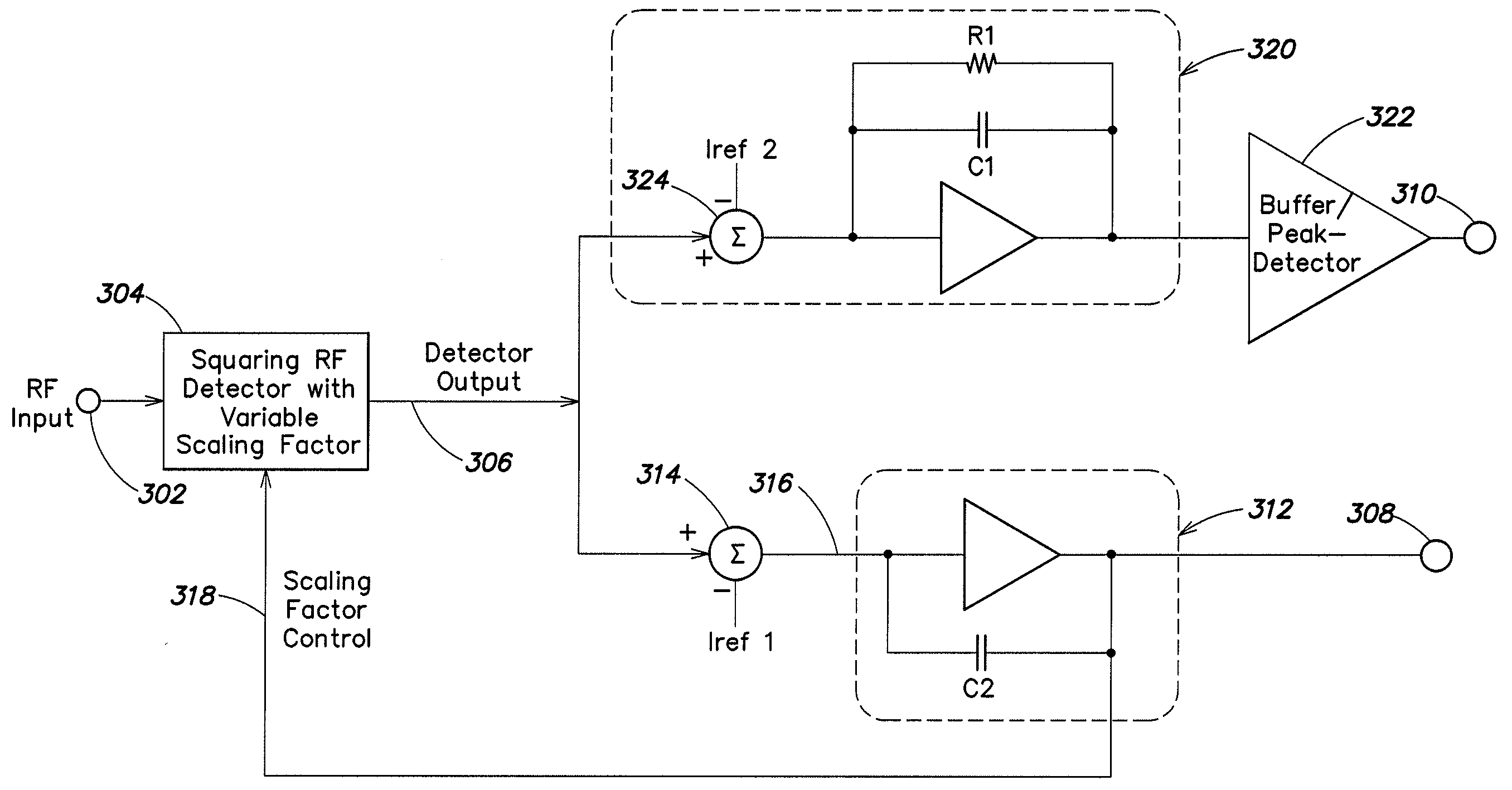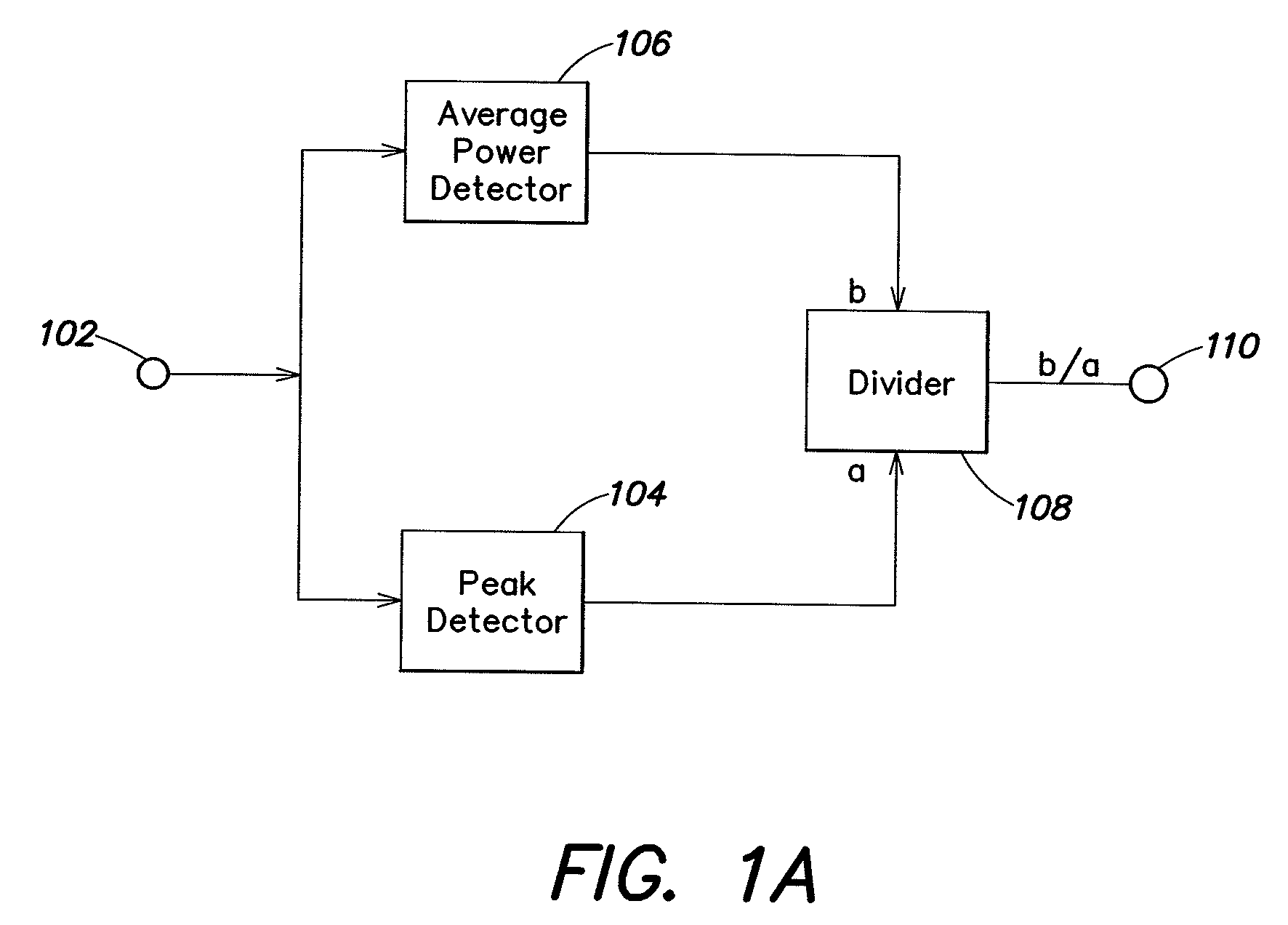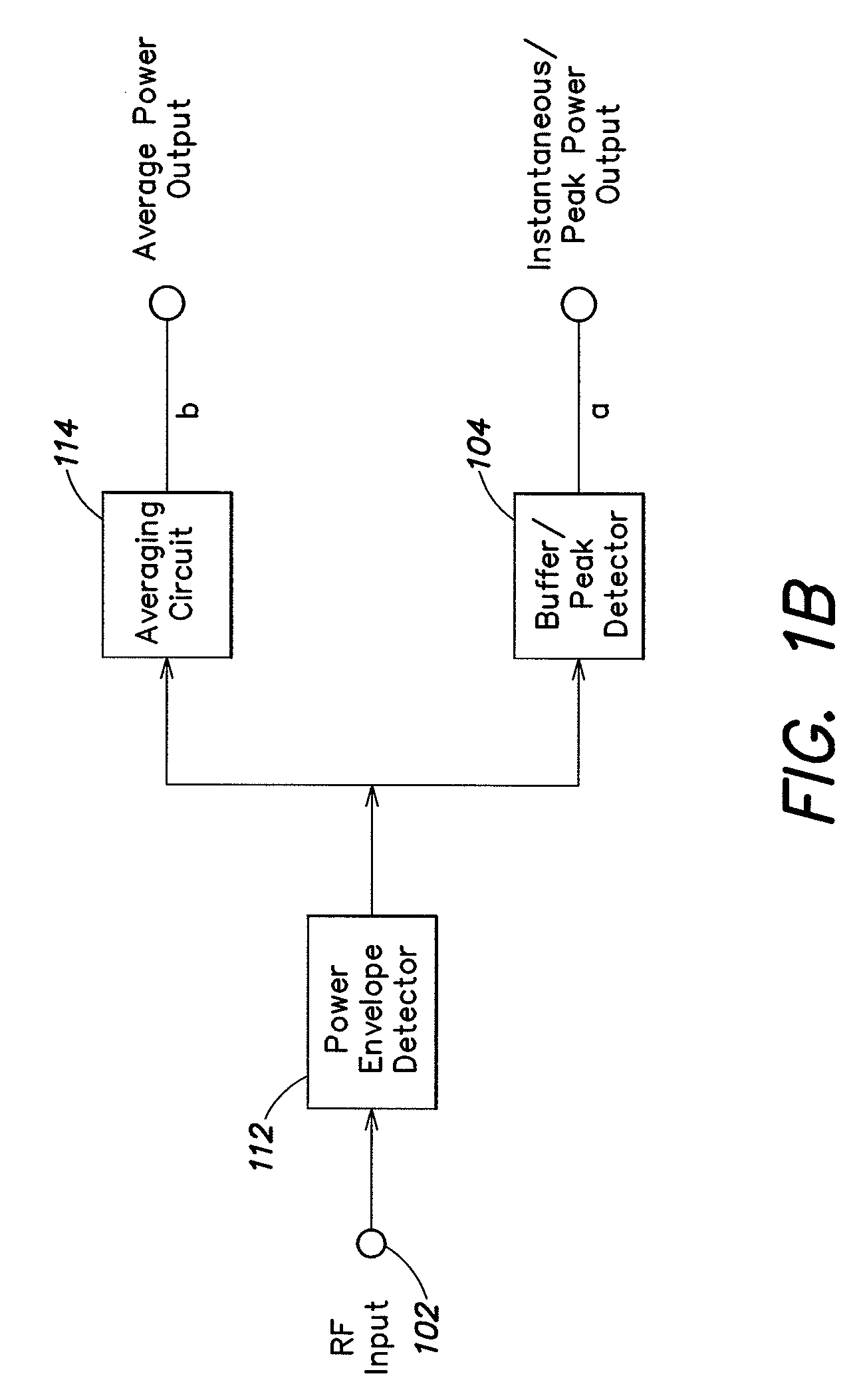RF detector with crest factor measurement
a detector and crest factor technology, applied in the field of rf detectors, can solve the problems of reducing degrading the accuracy of the measurement, especially of the crest factor measurement, and adding complexity and cost to the system, so as to increase the input dynamic range and accurate divider
- Summary
- Abstract
- Description
- Claims
- Application Information
AI Technical Summary
Benefits of technology
Problems solved by technology
Method used
Image
Examples
Embodiment Construction
[0046]There is a wide range of applications in which providing an accurate measurement or representation of both the true RMS (root-mean-square) power and an indication of the instantaneous or peak power of an RF signal may be advantageous. For example, in communications systems signal power level measurements may be used to provide a received signal strength indication (RSSI) and / or a transmitter signal strength indication (TSSI). These signal power measurements may also be used for RF power amplifier efficiency control, receiver automatic gain control, and / or transmitter power control. As discussed above, some systems involve complex modulated signals (e.g., CDMA, WCDMA or WiMAX wireless communication systems). These systems may benefit from accurate average power information that is independent of the modulation scheme. In some communication systems, instantaneous or peak power level information, in combination with RMS average power level information may be critical to avoid sat...
PUM
 Login to View More
Login to View More Abstract
Description
Claims
Application Information
 Login to View More
Login to View More - R&D
- Intellectual Property
- Life Sciences
- Materials
- Tech Scout
- Unparalleled Data Quality
- Higher Quality Content
- 60% Fewer Hallucinations
Browse by: Latest US Patents, China's latest patents, Technical Efficacy Thesaurus, Application Domain, Technology Topic, Popular Technical Reports.
© 2025 PatSnap. All rights reserved.Legal|Privacy policy|Modern Slavery Act Transparency Statement|Sitemap|About US| Contact US: help@patsnap.com



